Junkers Ju 388 L-1
Conversion
for any Dragon Ju 88 kit
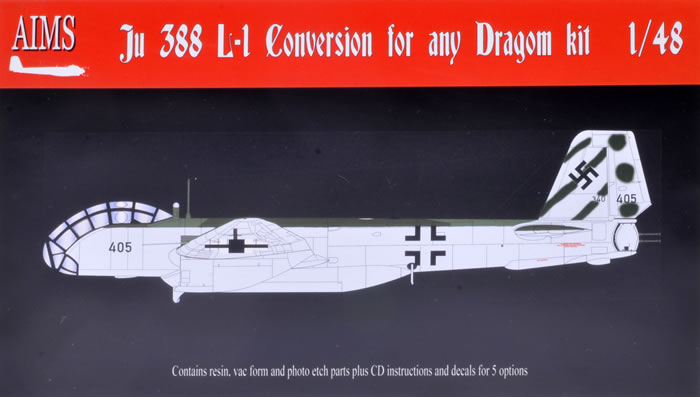
AIMS, 1/48 scale
S
u m m a r y |
| Catalogue Number and Description: |
AIMS - Junkers Ju 388 L-1 Conversion for any Dragon Ju 88 kit |
| Scale: |
1/48 |
| Price: |
£48.00 plus shipping available online from AIMS website |
| Scale: |
1/48 |
| Contents and Media: |
59 parts in grey resin; two parts in clear resin; six vacform parts (one set of three and a spare set); two photo-etched frets; markings for five aircraft; instructions and reference photos on CD. |
| Review Type: |
FirstLook |
| Advantages: |
Ambitious and comprehensive conversion; highly detailed; excellent quality casting; generally straightforward cleanup; detailed instructions and marking guide. |
| Disadvantages: |
Frame detail on the vac canopy looks a bit soft. |
| Conclusion: |
A major and well detailed conversion to the ultimate operational variant of the Ju 88 family. Highly Recommended to experienced late-war Luftwaffe modellers. |
Reviewed by Brett Green

HyperScale is proudly supported by Squadron.com
Background
The Junkers Ju 388 was the ultimate operational development of the versatile Ju 88 family.
After the Ju 288 programme was abandoned, the simpler Ju 388 was accelerated. The primary focus was to find a fast bomber capable of outrunning late-war Allied fighters, however the flexible design was also adapted to other roles.
The first production version was the photo-reconnaissance model, the Ju 388L. The Ju 388K bomber version was externally almost identical to the reconnaissance bird. The main difference was the ordnance in the ventral pannier. A night-fighter version, the Ju 388J, was also under development.
The Ju 388K and L were based on the Ju 188 series, but differed considerably in appearance and specification. The crew worked in a redesigned cockpit and simplified glazing. The wooden ventral pannier bulged from the fuselage. The vertical tail was a new, larger design, and the tail carried a sting via a remote-controlled barbette equipped with twin MG131 13mm machine guns.
Two BMW 801TJ engines in revised cowlings drove four-bladed VDM-Dural propellers. Maximum speed was 615km/h at 12,285 metres.
The Ju 388 L in 1/48 scale
We haven't exactly been overwhelmed by renditions of this ultimate Ju 88 in 1/48 scale.
Planet Models offered a mostly resin kit around 2000. I bought and built one not long after they were released.
This was a decent model with a good level of detail, but the large resin parts were prone to shrinkage and warping. For example, on my model, one fuselage half was 2-3mm shorter than the other.
Heritage Aviation also offered a basic resin and white metal conversion. The parts were pretty rough by today's standards but still, it looked like a Ju 388.
Both the Planet Models kit and the Heritage Aviation conversion are now long out of production.
AIMS has now filled this void with a brand new and very comprehensive Junkers Ju 388 L-1 conversion.
AIMS 1/48 scale Ju 388 L-1 conversion comprises 59 parts in grey resin; two parts in clear resin; six vacform parts (one set of three and a spare set); two photo-etched frets; markings for five aircraft; instructions and reference photos on CD.
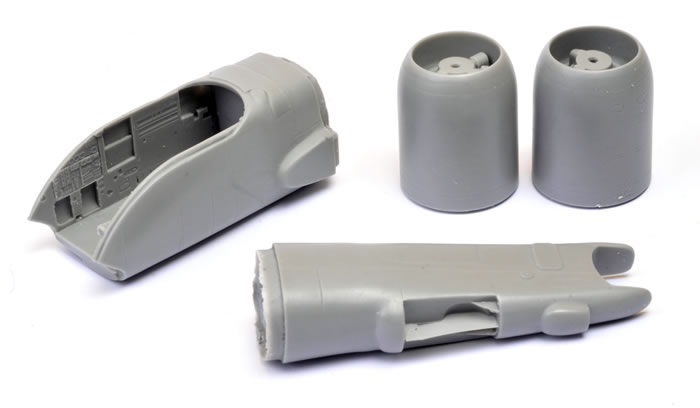
The quality of the resin is excellent, with perfect casting and nice crisp surface textures. Cleanup looks generally straightforward, although the engine fans are cast onto a resin wafer that might need a bit of extra thought and care.
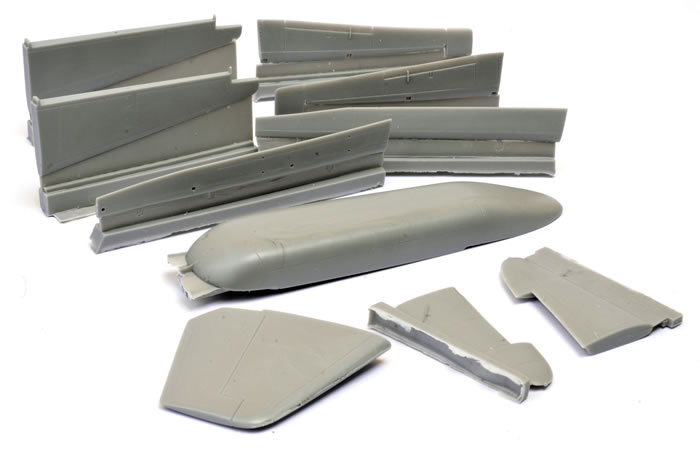
The major resin parts include a new one-piece nose, new engine nacelles, replacement rear fuselage and tail surfaces, ventral pannier, engine fans, props, spinners, intakes and more.

The engine nacelles include annular radiator detail cast inside.
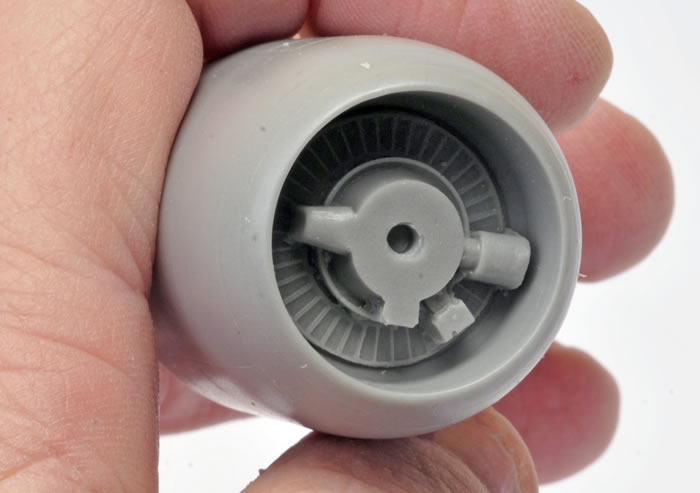
The cockpit also receives some resin love with new seats, control column, instrument panel and more.
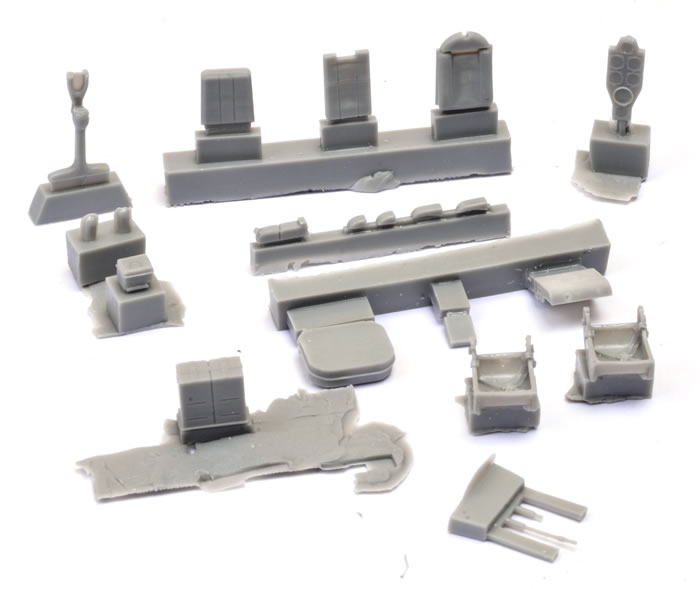
Cockpit dials, stencils and switches are provided as individual decals. The instructions include a detailed diagram for placing these small decals.
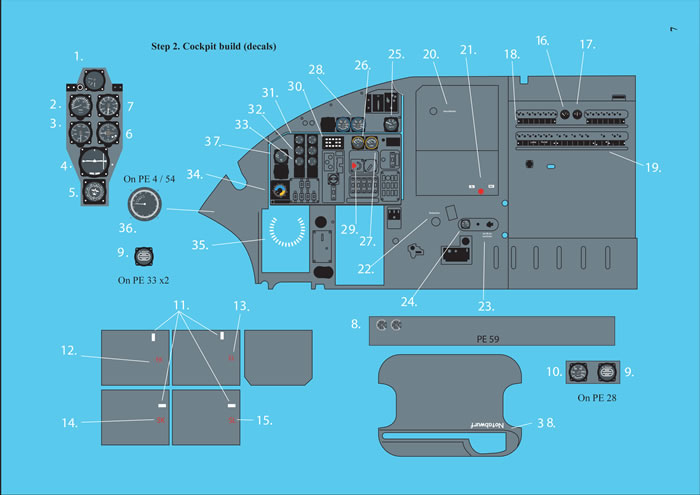
The upper and lower periscopes are cast in clear resin.

Photo-etched details are provided for the cockpit and the exterior.
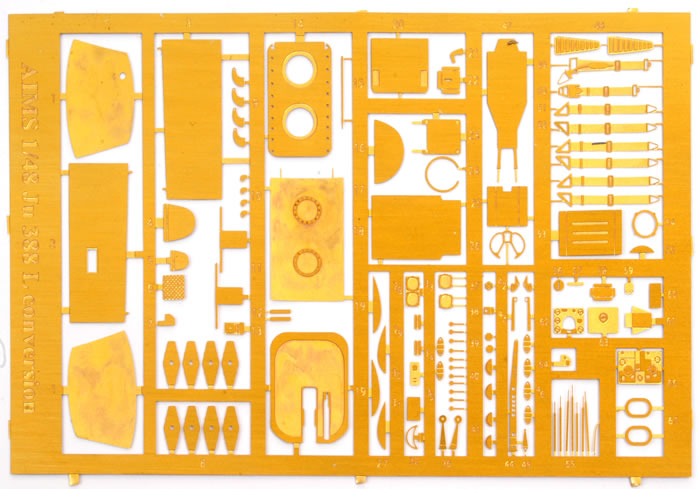
AIMS offers two vacform canopies in case of slip-ups - a very helpful addition. Frame detail looks a bit soft on the clear canopy parts but they should look fine after painting. In fact, some photos suggest that the frames are on the inside of the canopy so this may work in your favour - paint the framing then apply a few coats of Future floor polish.
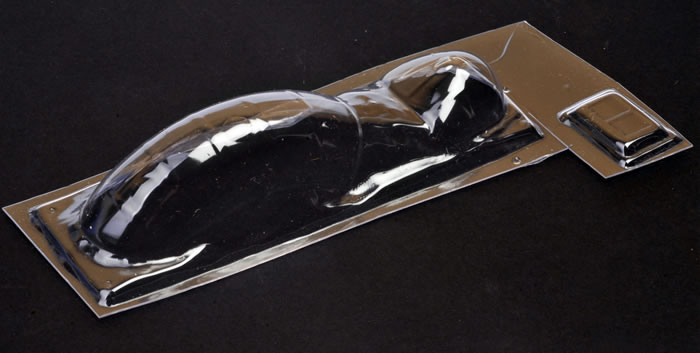
Instructions are supplied on a CD. They take the form of 14 pages in PDF format plus another six PDF pages of captioned reference photos. A further collection of un-captioned photos is also included in a second folder on the disk.
Considering this is a major conversion, there is a minimum of surgery required. You'll only need to cut the rear fuselage off, blank off a couple of aerial mounts, sand down the top of the kit's rear engine nacelles, open up the heat exchanger intakes in the front wing roots and add braces to the main undercarriage doors.
The instructions are thoroughly illustrated and include lots of helpful captions and text.
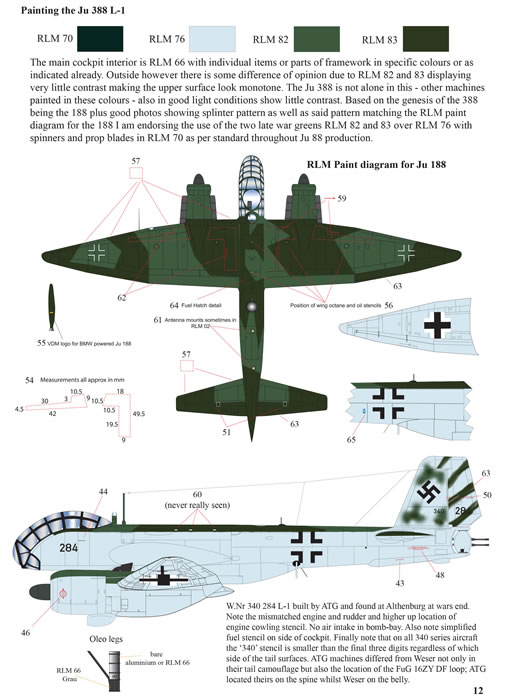
Markings for five aircraft are included. These are not "Luftwaffe '46" aircraft but real subjects. AIMS puts forward a credible argument in favour of these aircraft being finished in RLM 82 and 83 Greens on the upper surfaces.

The decals are in perfect register and glossy.
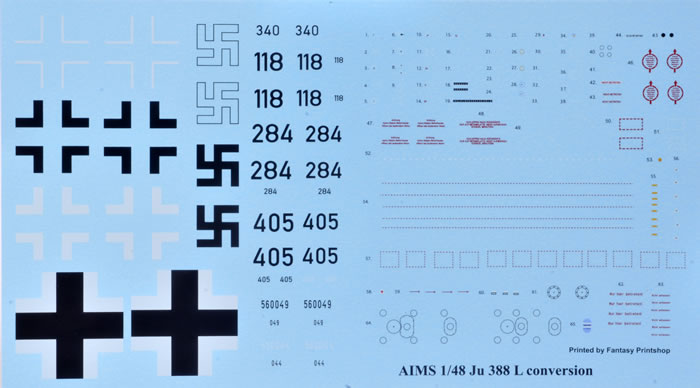
They have been printed by Fantasy Printshop. Stencil markings are included.
AIMS has delivered a major and well detailed conversion to the ultimate operational variant of the Ju 88 family.
Considering the comprehensive nature of the conversion, there is a minimum of surgery required to Dragon's donor kit.
Highly Recommended to experienced late-war Luftwaffe modellers. Grab one while you can!
Thanks to AIMS for the sample
AIMS' decals, kits and accessories are
available online from AIMS website
Review Text and Images Copyright © 2017 by Brett Green
Page Created on 6 July, 2017
Last updated
7 July, 2017
Back to
HyperScale Main Page

|
